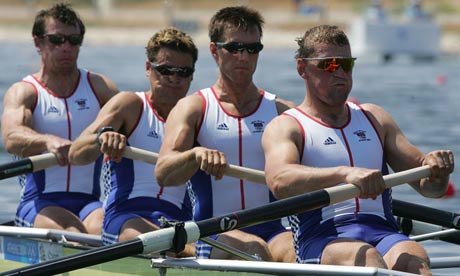
Team players can tolerate twice as much pain as those who work alone, according to research that throws fresh light on some of the most wince-inducing feats in sporting history.
Researchers at Oxford University found that members of its rowing team had a greater pain threshold after training together than when they performed the same exercises individually.
Working as a group is thought to boost the rush of endorphins, a feel-good chemical that is released in the brain and helps dampen down feelings of pain, the scientists said.
The effect might have played a part in an extraordinary FA Cup final between Manchester City and Birmingham in 1956. The City goalkeeper, Bert Trautmann, broke his neck after diving for the ball, but went on to make a series of crucial saves to help his team win the game 3-1.
Writing in the Royal Society journal, Biology Letters, the researchers speculate that a similar surge of endorphins might underlie the feel-good sensations people experience when they dance together, play team sports or take part in religious rituals.
Emma Cohen, who led the study, said it was unclear why people should experience a greater rush of endorphins when they were part of a group.
The study involved 12 male rowers from the Oxford boat race squad. In the first part of the experiment, two teams of six rowed continuously for 45 minutes in the gym. Their rowing machines were linked up to create a "virtual boat" that demanded they all row in synchrony.
In the next training session, the rowers performed the same exercise as individuals, unobserved by others on the team.
Between five and ten minutes after each training session, the researchers measured the rowers' pain thresholds by putting a blood pressure cuff around the arm and inflating it until it became uncomfortably painful. Exercise is known to release endorphins, which act as a temporary painkiller.
"Compared with training alone, group training significantly increases pain threshold," the researchers write. "We can rule out the possibility that this effect might have been due to elevated work rates ... because the rowers' power output was not significantly different."
The researchers repeated the study the following week to validate the findings.
"Previous research suggests that synchronised physical activity such as laughter, music and many religious activities makes people happier and is part of the bonding process," said Robin Dunbar, a co-author and head of the institute of cognitive and evolutionary anthropology at Oxford.
"What this study shows us is that synchrony alone seems to ramp up the production of endorphins so as to heighten the effect when we do these activities in groups," he added.

